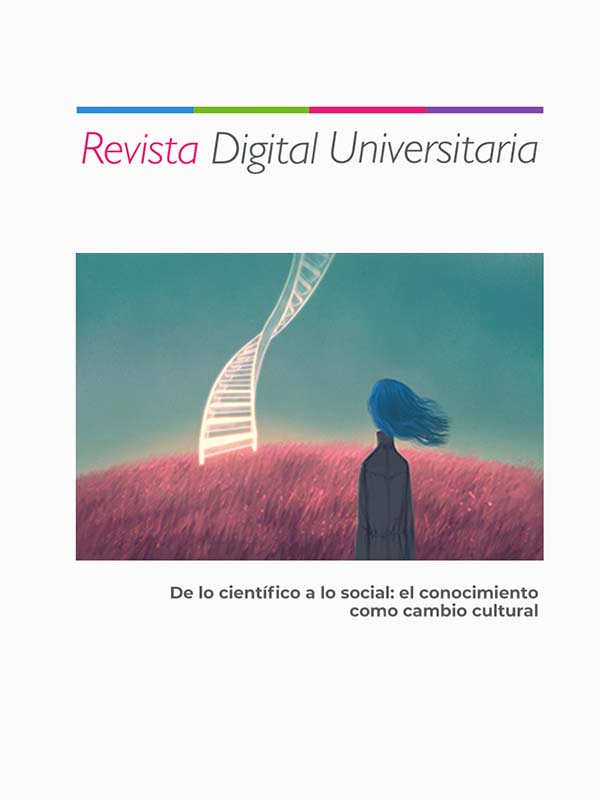Shrimp that is discarded is lost: lactic fermentation as a solution
DOI:
https://doi.org/10.22201/ceide.16076079e.2025.26.1.6Keywords:
shrimp waste, lactic fermentation, waste valorization, natural antioxidants, chitinAbstract
Shrimp waste is an important source of industrial compounds, such as chitin. However, despite the studies conducted, these residues are not fully utilized. Currently, only a chemical process is used to obtain chitin, but this method does not recover other valuable components such as proteins and carotenoids, and it consumes large amounts of water and energy. Therefore, more efficient alternatives have been explored. Lactic fermentation (fl) has proven to be an economical and effective strategy for utilizing shrimp waste. This process generates two phases: a solid and a liquid (liquor), which contain hydrolyzable proteins, minerals, polyunsaturated fatty acids, carotenoids, and chitin. These products have the potential to be used as sources of antioxidants, anti-inflammatory agents, immunomodulators, and in food formulation. Thus, fl of shrimp waste not only contributes to reducing environmental issues but also adds value to the waste from the fishing industry.
References
Encyclopaedia Britannica (2024). “enzyme” en Encyclopedia Britannica, 22 Jul. 2024, https://www.britannica.com/science/enzyme.
Cabanillas-Bojórquez, L. A., Gutierrez-Grijalva, E. P., Castillo-Lopez, R. I., Contreras-Angulo, L. A., Angulo-Escalante, M. A., Lopez-Martinez, L. X., Rios-Iribe, M. A. y Heredia, J. B. (2021)a. Bioprocessing of Shrimp Waste Using Novel Industrial By-Products: Effects on Nutrients and Lipophilic Antioxidants. Fermentation, 7(4), 312. https://doi.org/10.3390/fermentation7040312.
Cabanillas-Bojórquez, L. A., Gutierrez-Grijalva, E. P., Gonzalez-Aguilar, G. A., Lopez-Martinez, L. X., Castillo-Lopez, R. I., Bastidas-Bastidas, P. D., y Heredia, J. B. (2021)b. Valorization of Fermented Shrimp Waste with Supercritical CO2 Conditions: Extraction of Astaxanthin and Effect of Simulated Gastrointestinal Digestion on Its Antioxidant Capacity. Molecules, 26(15), 4465. https://doi.org/10.3390/molecules26154465.
Cabanillas-Bojórquez, L. A., Montes-Avila, J., Vega-Garcia, M. O., Lopez-Moreno, H. S., Castillo-Lopez, R. I., y Gutierrez-Dorado, R. (2023). Effect of Optimized Chitosan Coating Obtained by Lactic Fermentation Chemical Treatment of Shrimp Waste on the Post-Harvest Behavior of Fresh-Cut Papaya (Carica papaya L.). Fermentation, 9(3), 220. https://doi.org/10.3390/fermentation9030220.
Canpulat, M., Pinar, O., Yilmaz-Sercinoglu, Z., y Kazan, D. (2022). Valorization of shrimp waste by obligate alkaliphilic Bacillus marmarensis. Biomass Conversion and Biorefinery. https://doi.org/10.1007/s13399-022-03684-7.
conapesca (2024). Se posiciona México como el segundo mejor productor de camarón en Latinoamérica. Comisión Nacional de Acuacultura y Pesca. https://www.gob.mx/conapesca/prensa/se-posiciona-mexico-como-el-segundo-mejor-productor-de-camaron-en-latinoamerica?idiom=es-MX.
Doan, C. T., Tran, T. N., Nguyen, V. B., Vo, T. P. K., Nguyen, A. D., y Wang, S. L. (2019). Chitin extraction from shrimp waste by liquid fermentation using an alkaline protease-producing strain, Brevibacillus parabrevis. International Journal of Biological Macromolecules, 131, 706-715. https://doi.org/10.1016/j.ijbiomac.2019.03.117.
Peña García, P., Querevalú Ortiz, J., Ochoa Mogollón, G., y Sánchez Suárez, H. (2020). Boilogical silage of shrimp waste fermented with lactic acid bacteria: Use as a biofertilizer in pasture crops and as feed for backyard pigs. Scientia Agropecuaria, 11(4), 459-471. https://doi.org/10.17268/sci.agropecu.2020.04.01.
Gharibzadeh, M., Osfouri, S., Jamekhorshid, A., y Jafari, S. A. (2023). Microbial chitin extraction and characterization from green tiger shrimp waste: A comparative study of culture mediums along with bioprocess optimization. International Journal of Biological Macromolecules, 242, 125213. https://doi.org/10.1016/j.ijbiomac.2023.125213.
Hamdi, S. A. H., Ghonaim, G. M., El Sayed, R. R., Rodriguez-Couto, S., y Abd El-Ghany, M. N. (2024). Bioprocess of astaxanthin extraction from shrimp waste via the common microorganisms Saccharomyces cerevisiae and Lactobacillus acidophilus in comparison to the chemical method. Biomass Conversion and Biorefinery, 14(7), 8333-8339. https://doi.org/10.1007/s13399-022-02984-2.
Jafari, R., Homaei, A., Ahmadi, A. R., y Kamrani, E. (2023). Optimization and identification of astaxanthin esters from shrimp waste using microbial fermentation method. Biomass Conversion and Biorefinery, 1-16. https://doi.org/10.1007/s13399-023-04398-0.
Leiva-Portilla, D., Martinez, R., y Bernal, C. (2023). Valorization of shrimp (Heterocarpus reedi) processing waste via enzymatic hydrolysis: Protein extractions, hydrolysates and antioxidant peptide fractions. Biocatalysis and Agricultural Biotechnology, 48, 102625. https://doi.org/10.1016/j.bcab.2023.102625.
Malik, V. S., y Hu, F. B. (2015). Fructose and cardiometabolic health: what the evidence from sugar-sweetened beverages tells us. Journal of the American College of Cardiology, 66(14), 1615-1624. https://doi.org/10.1016/j.jacc.2015.08.025.
Navarrete-Bolanos, J. L., Gonzalez-Torres, I., Vargas-Bermudez, V. H., y Jimenez-Islas, H. (2020). A Biotechnological Insight to Recycle Waste: Analyzing the Spontaneous Fermentation of Shrimp Waste to Design the Hydrolysis Process of Chitin into N-Acetylglucosamine. Revista Mexicana De Ingenieria Quimica, 19(1), 263-274. https://doi.org/10.24275/rmiq/Bio544.
Suresh, P. V., Kudre, T. G., y Johny, L. C. (2018). Sustainable Valorization of Seafood Processing By-Product/Discard (E. Int Soc, C. I. Environm Sustainabil, G. I. D. S. Appl Bioprocessing, y T. S. I. T. A. V. L. H. S. Technol, Trans.). In R. R. Singhania, R. A. Agarwal, R. P. Kumar, y R. K. Sukumaran (Eds.), Waste to Wealth. Energy, Environment, and Sustainability. (pp. 111-139). Mohali, INDIA: Springer Nature. https://doi.org/10.1007/978-981-10-7431-8_7.
Ximenes, J. C. M., Hissa, D. C., Ribeiro, L. H., Rocha, M. V. P., Oliveira, E. G., y Melo, V. M. M. (2019). Sustainable recovery of protein-rich liquor from shrimp farming waste by lactic acid fermentation for application in tilapia feed. Brazilian Journal of Microbiology, 50(1), 195-203. https://doi.org/10.1007/s42770-018-0024-3.
Xin, R. Y., Xie, W. C., Xu, Z. Y., Che, H. X., Zheng, Z. X., y Yang, X. H. (2020). Efficient extraction of chitin from shrimp waste by mutagenized strain fermentation using atmospheric and room-temperature plasma. International Journal of Biological Macromolecules, 155, 1561-1568. https://doi.org/10.1016/j.ijbiomac.2019.11.133.
Zhou, Y., Guo, N., Wang, Z. M., Zhao, T. Y., Sun, J. A., y Mao, X. Z. (2021). Evaluation of a clean fermentation-organic acid method for processing shrimp waste from six major cultivated shrimp species in China. Journal of Cleaner Production, 294, 126135. https://doi.org/10.1016/j.jclepro.2021.126135.
Published
Issue
Section
License
Copyright (c) 2025 Revista Digital Universitaria

This work is licensed under a Creative Commons Attribution-NonCommercial-ShareAlike 4.0 International License.

Revista Digital Universitaria es editada por la Universidad Nacional Autónoma de México se distribuye bajo una Licencia Creative Commons Atribución-NoComercial 4.0 Internacional. Basada en una obra en http://revista.unam.mx/.










